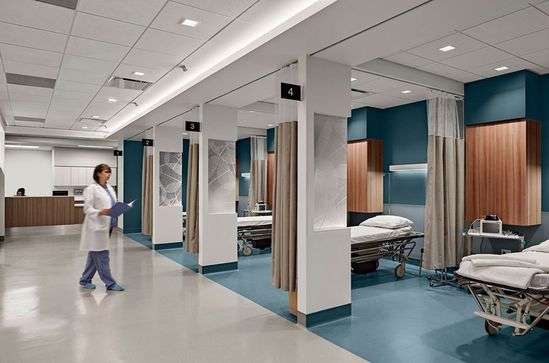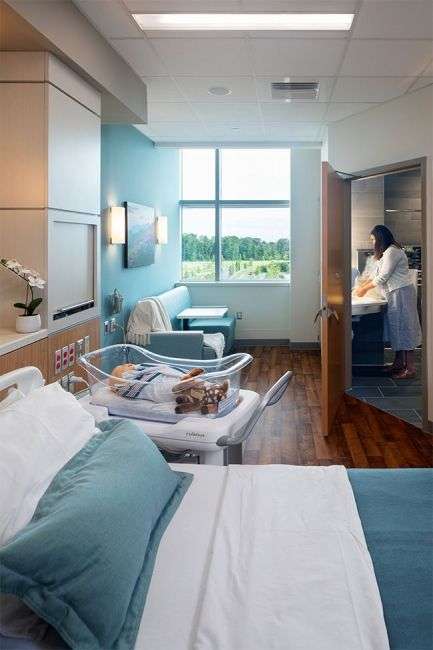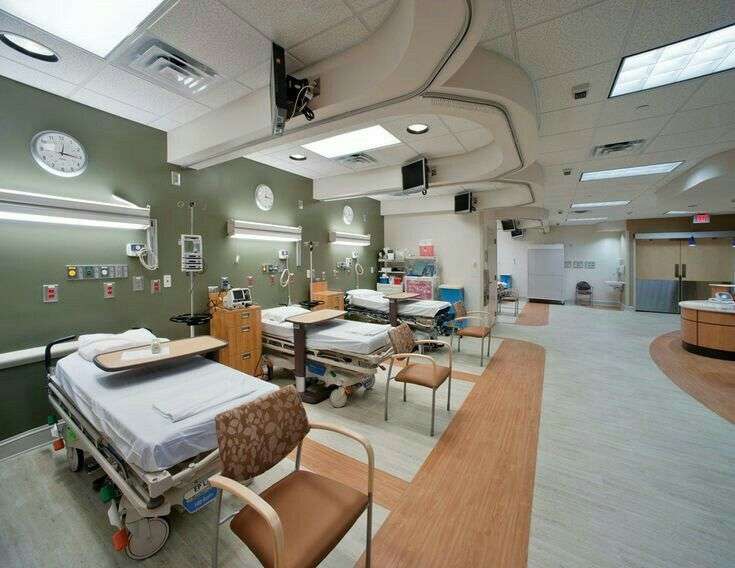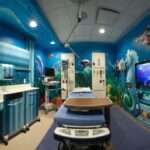
Transforming Healthcare: The Rise of Theme-Based Hospitals
May 14, 2024
Hospital Renovation & Brownfield Projects: A Guide To Improved Healthcare
May 28, 2024Hospitals are more than just sterile treatment centers. They are sanctuaries of healing, where patients embark on a journey towards recovery. Here at Hospertz, we understand the profound impact that hospital design can have on patient well-being, staff efficiency, and overall healing.
In this blog, we’ll delve into the key principles of effective hospital interior design, guiding you in creating a space that fosters comfort, reduces stress, and promotes a positive experience for everyone who steps through the doors.
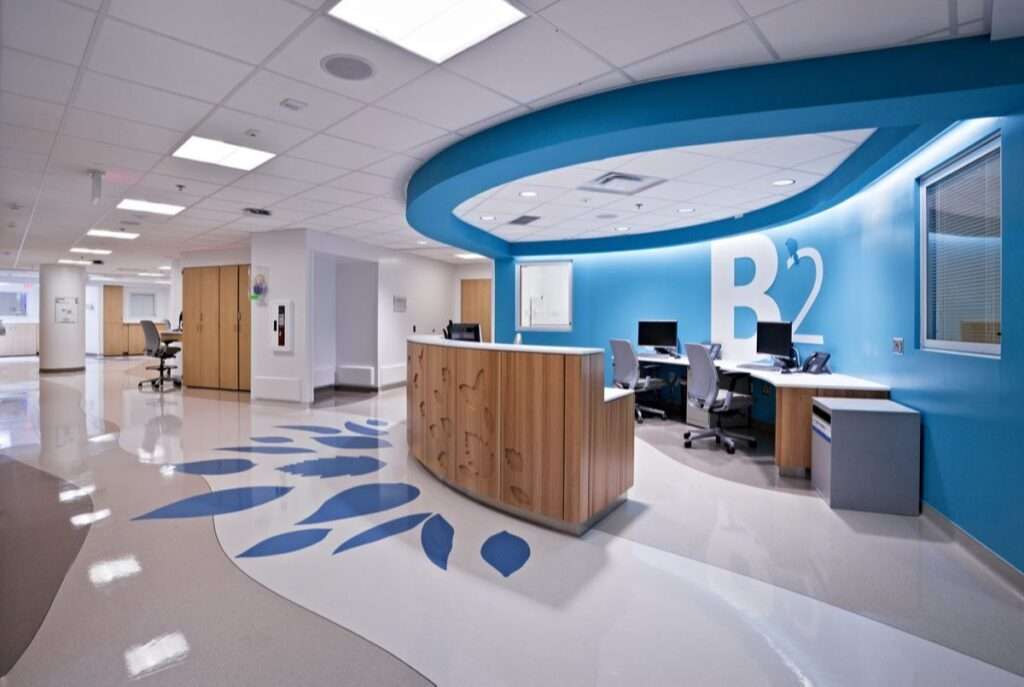
Function Meets Form: Balancing Efficiency and Patient Experience
Hospital design requires a delicate balance between functionality and aesthetics.
- Workflow Optimization: Layout and spatial organization should prioritize efficient patient flow, easy access for medical staff, and clear wayfinding for visitors. This reduces congestion and ensures timely delivery of care.
- Patient Comfort: Hospitals are not hotels, but patients deserve comfortable surroundings. Consider private and semi-private rooms with ample natural light, adjustable lighting controls, and ergonomic furniture.
- Staff Well-being: A well-designed hospital caters to staff needs as well. Create designated break rooms, nursing stations with clear lines of sight, and ergonomically designed workstations to combat fatigue and improve work productivity.
A Symphony of the Senses: Creating a Calming Environment
Hospitals are often associated with clinical sterility, a stark environment that can induce anxiety. Here’s how to design a space that soothes the senses and promotes a sense of calm:
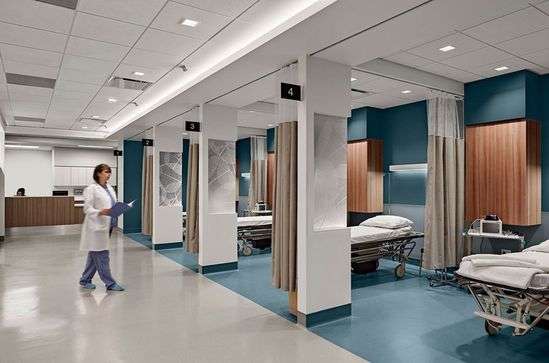
- Color Psychology: Colors play a significant role in influencing mood. Opt for calming hues like blues, greens, and soft yellows, while incorporating pops of color for visual interest. Avoid overwhelming or overly stimulating colors.
- Natural Light & Biophilic Design: Natural light has a demonstrably positive impact on healing. When possible,maximize window space, utilize skylights, and incorporate courtyards or atriums. Integrate biophilic elements like indoor plants, natural textures, and calming water features.
- Soothing Sounds & Acoustics: Hospitals are inherently noisy environments. Implement sound-absorbing materials in ceilings, walls, and furniture. Consider piped-in nature sounds or relaxing music in waiting areas.
- Scent & Air Quality: Maintaining fresh, clean air is crucial. Invest in air purification systems and avoid harsh chemical cleaning products. Pleasant, subtle scents like lavender or citrus can evoke feelings of calmness and peace.
Creating a Sense of Place: Design with Patients in Mind
A hospital shouldn’t feel institutional. Consider these elements to personalize the space and cater to diverse patient needs:
- Art & Cultural Sensitivity: Artworks portraying nature, uplifting themes, or cultural references can create positive distractions and a sense of community. Consider incorporating works from local artists.
- Wayfinding & Signage: Clear and consistent signage is essential for patient and visitor navigation. Use intuitive symbols, easy-to-read fonts, and consider multilingual signage if necessary.
- Patient Choice & Control: Empower patients by offering adjustable lighting controls, temperature controls, and privacy curtains. Provide designated areas for family interaction and relaxation.
Beyond Aesthetics: Designing for Accessibility and Safety
Hospital design needs to prioritize the safety and comfort of all users, including those with physical limitations.
- Safety Features: Implement slip-resistant flooring throughout the hospital. Install handrails in corridors, ramps,and restrooms.
- Infection Control: Utilize materials with easy-to-clean surfaces to minimize the spread of germs. Utilize touchless features where possible, like automatic doors and sensor-operated faucets.
A Collaborative Approach: Partnering for Success
Creating a successful hospital interior design requires a collaborative effort from various stakeholders.
- Hospital Administration: Understanding the hospital’s vision, budget, and operational needs is crucial.
- Architects & Designers: Experienced healthcare architects and designers understand the unique needs of hospital environments.
- Medical Staff: Involve doctors, nurses, and other medical professionals to ensure the design promotes efficient workflow and patient care.
Conclusion: Investing in Healing
Hospital interior design is not merely about aesthetics; it’s an investment in the health and well-being of patients, staff,and the entire community. By prioritizing patient comfort, staff efficiency, and a holistic approach to healing, you can create a hospital environment that fosters a positive experience and optimal outcomes for everyone involved.
Here at Hospertz, we are dedicated to partnering with hospitals to create innovative and functional healthcare facilities. Our team of experienced consultants can guide you through every step of the design process, ensuring a successful outcome that prioritize.

